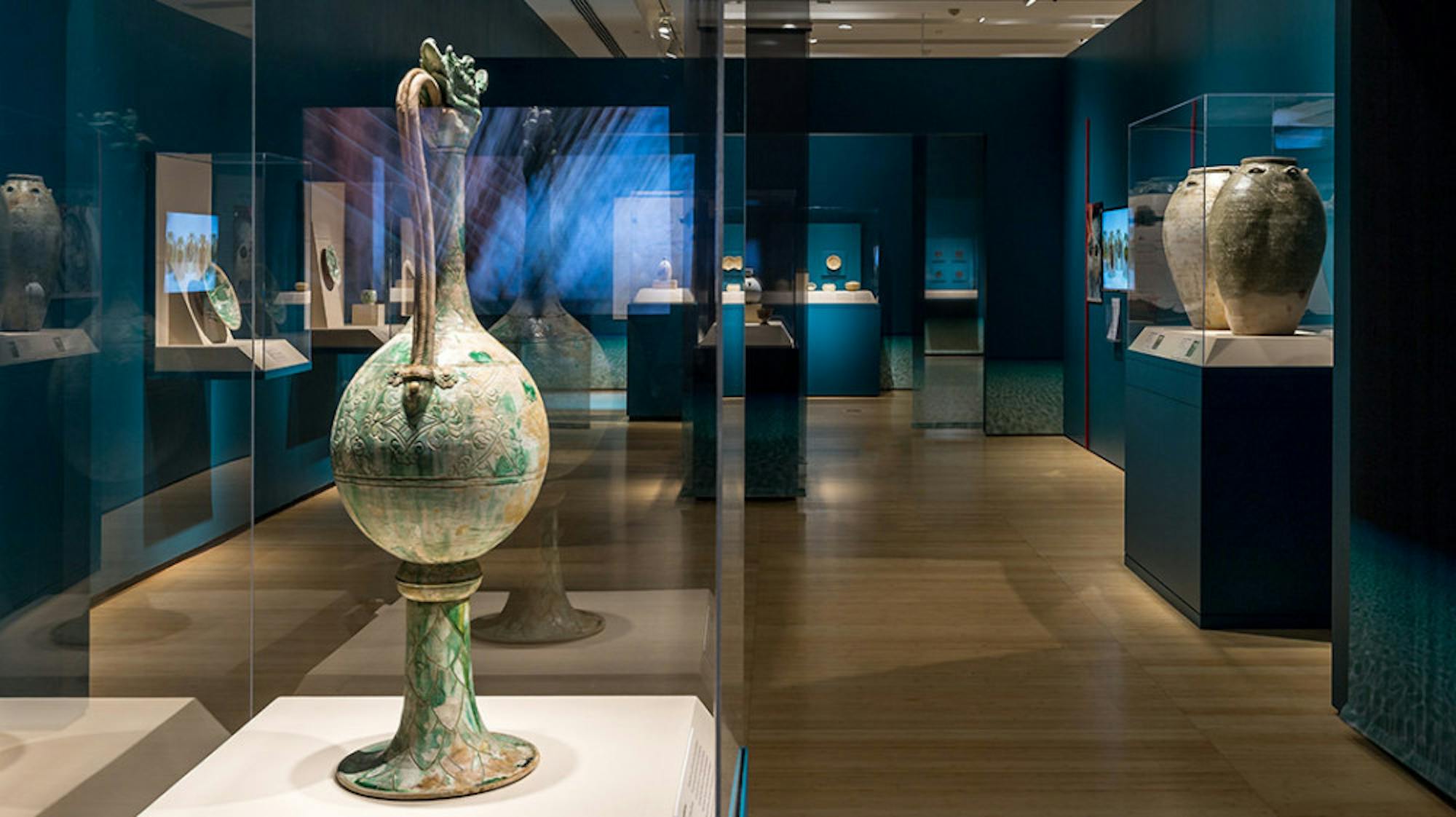The Asia Society in New York is featuring an exhibit of the findings of a shipwreck found on the Indonesian coast called “Secrets of the Sea: A Tang Shipwreck and Early Trade in Asia,” from March 7 to June 4. The Arab ship had sailed to China and crashed on its return trip in the second half of the ninth century while carrying goods bound for the Middle Eastern market. The cause of the wreck is unknown, but its discovery crucially proved that trade between the two great Eastern civilizations, the Tang Dynasty and Abbasid Caliphate, was vital for both societies and was not limited to land travel on the Silk Road. However, the circumstances of the excavation have proved to be controversial -- so controversial that no American museum has agreed to feature its findings until now.
The ship’s remains were found in 1998 by local sea cucumber divers off the coasts of Belitung Island in the Java Sea. Upon learning of the discovery, the Indonesian government made the controversial and, according to some, indefensible decision to hire a private, commercial salvaging company called Seabed Explorations to excavate the wreck.
Seabed Explorations helped salvage the remains, financed the excavation and sold their finds to the Sentosa Leisure Group, a private entity owned by the Singaporean government. Sentosa in turn sought to sell the artifacts to private collectors, but also sold about 8,000 artifacts back to the Singapore government in 2005, where they have been stored and made visible to the public in Singapore’s Asian Civilizations Museum.
The procedure was legal in Indonesia, but the controversy concerns the ethics of the transactions, not the legality. Critics of the transaction said the commercial company’s process prioritizes speed and financial gain over carefulness. In this case 63,000 of 70,000 artifacts were taken and documented in only two seasons in 1998 and 1999 -- an exceedingly rushed time frame by archeological standards. And although Seabed managed to document and photograph their procedures, potentially significant information such as which artifacts came from which grid lines of the site, was not recorded.
In 2011 the Smithsonian Institution in Washington, D.C. announced that it would feature the artifacts in “Shipwrecked: Tang Treasures and Monsoon Winds,” but backlash from respected archeological institutions (including the Archeological Institute of America) as well as internal division prompted the Smithsonian to cancel the exhibit. Since then, no American museum has attempted to exhibit these artifacts before this March.
The Asia Society’s exhibit “Secrets of the Sea: A Tang Shipwreck and Early Trade in Asia” takes a simple and reverential approach to the artifacts, with dim lighting all around the gallery and concentrated light on the artifacts. A collection of stone storage jars and the ceramic bowls they held reflects the main exports from China for an Arab market. The ceramic combines Chinese and Arab aesthetics to reflect the product’s origin and intended ownership. Designs include traditional Hindu and Buddhist imagery, such as Makara sea creatures, as well as naturalistic imagery popular in the Middle East, including flowers, date palms and lions. This imagery, particularly flower patterns, occurs on other artifacts like Gong Xian ware, copper mirrors and gold dishes.
The metalwork in the exhibit consists of copper, silver and gold. Although it is unclear whether they were intended for sale, trade or diplomatic gifts, they do indicate the Tang Dynasty’s efforts to engage with elites and political figures of the Abbasid Empire and cement their relations. The exhibit also shows white ware from Xing kilns, which were desirable in both cultures and are still in stunning condition. Most significant, however, are the white ceramics painted with blue cobalt -- a style that originated in Iran and which China used to appeal to the Middle Eastern market. The Chinese cobalt ceramics found on this ship are the earliest ones found to date.
While the exhibit recognizes the controversy surrounding these findings, it stands by its decision to showcase them. As the Asia Society argues at the end of the exhibit, the actions of the Indonesian government are not so indefensible as to keep from showing such fascinating and significant artifacts. The shipwreck is considered one of the most important maritime finds of the 20th century.
The exhibition points out that Indonesia was struggling at the time the shipwreck was discovered. The country was experiencing civil unrest and economic troubles, and realized that the goods were being looted by local fishermen as they sat in the sea. Although Seabed did not have purely scientific motives, they took care in taking pictures of the scavenging and carefully desalinating the artifacts to restore them as fully as possible. In a country experiencing economic and social unrest and wanting to preserve its culture but lacking the ability to do so, the government acted quickly and within its financial means. While critics argue that museums showing artifacts uncovered privately rewards unethical and unscientific archeological processes, the Asia Society along with the Asian Civilizations Museum argues that public-private partnerships, though problematic, might be the best resource for poor countries with archeological finds. Either way, the Asia Society managed to maintain grace and respect in its exhibition, even in the face of controversy.
Controversial shipwreck findings on view at New York's Asia Society

The Asia Society presents the Secrets of the Sea exhibition, featuring artifacts from a ninth-century Chinese shipwreck.





